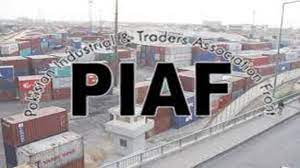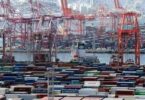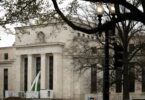F.P. Report
LAHORE: Pakistan Industrial and Traders Associations Front (PIAF) has said that beside increasing exports and controlling imports the government will have to take administrative measures, as a large demand of cash dollars are seen in the market.
PIAF Chairman Faheemur Rehman Saigol said that massive fall of rupee value continued to damage the economy, as the Pakistani currency continued its slide, reaching more than one month low above Rs286 against the US dollar in the inter-bank market this week.
In a statement issued here today, he observed that the rupee’s slide is attributed to the increased demand for foreign currency in the domestic economy, primarily driven by higher sales of automobiles, cement, petroleum oil products, and the repatriation of profits by foreign companies operating in the country.
He urged the government to control volatility of rupee against the US dollar, as the industrial revival and economic growth is not possible without stability of local currency. He said that the massive devaluation of currency fuelled inflationary pressures, adding that two major factors contributed to the price hike. First, the prices of food and commodities as well as fuel prices skyrocketed in the international market, and second, the depreciation of the exchange rate by 30 percent also led to higher inflation, he added.
Faheem Saigol argued that this devaluation of the currency was dictated by the IMF through prior actions and it has nothing to do with macroeconomic fundamentals. He said that there was a complete breakdown of economic policy making, as the country’s fiscal policy had become subservient to monetary and exchange rate policies.
PIAF Chairman said that the US dollar continued to rise against the rupee, reaching a record high amidst growing current account deficit. The government needs to devise a strategy on war-footing to increase foreign investment in Pakistan so as to stop the upward trajectory of the dollar, he added.
He said that the monetary tightening and exchange rate depreciation resulted in higher inflation, public debt and debt servicing. The empirical evidence showed that the one percent monetary tightening hiked the inflationary pressure by 1.3 percent in the case of Pakistan, he added.
He said that 10 percent devaluation of the currency raised the Consumer Price Index (CPI)-based inflation by 0.6 percent. As a result, he said, the 30 percent depreciation resulted in increasing inflationary pressures by approximately two percent.
This indicates that from the inflation standing at 11.5 percent on a monthly basis, nearly two percent comes through depreciation of the exchange rate, he pointed out.
Pakistan’s central bank reported an improvement in the country’s foreign exchange reserves (held by SBP), with an increase of $14 million to reach $7.50 billion in the week ending October 27. This suggests that the supply of foreign currency has been better than the demand for the US dollar in the market. Simultaneously, the IMF is conducting a relatively smooth review of Pakistan’s domestic economy under its ongoing $3 billion loan program.
Pakistan has met nearly all the conditions required for the review. The market anticipates that the Fund will approve the second tranche of its loan, amounting to $700 million, upon the completion of the economic review, which will further boost foreign exchange reserves. He suggested that the domestic currency may stabilize around its current fair value of approximately Rs285 per dollar soon due to fluctuations in the demand and supply of foreign currency.







